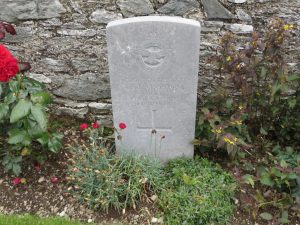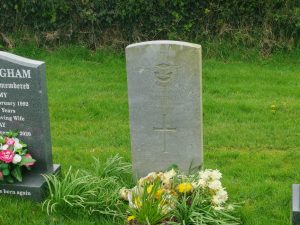Glacken, P O (Patrick O.)

Glacken, P O (Patrick O.)
Petty Officer Patrick Glacken was the son of Mrs. J. Glacken; husband of Gladys Muriel Glacken, of Westhoughton, Lancashire. He served onboard H.M.S. Curacoa.[1]
H.M.S. Curacoa was performing escort duties in the North Atlantic approach and had met with the Cunard ship R.M.S. Queen Mary[2] 20 miles off the coast of Ireland at 09.00 during the 2nd of October 1942. It was to escort the ship to Greenock in Scotland, while providing anti-aircraft and submarine protection.
As per procedure and to confuse enemy U-Boats, the Queen Mary continued doing its zigzag manoeuvres. The Curacoa was doing the same but unfortunately though manoeuvred far too close to the Queen Mary, while possibly chasing a sighting of a sub. Both captains were informed, and both expected the other to perform evasive actions, but neither did. At approximately 14:15 the ships, which were both travelling at around 29 knots, collided in open sea.
The Curacoa was struck on the starboard[3] side, amidship,[4] and as the Queen Mary ripped through its centre, the boiler exploded. The ship, which was now in two halves was on fire and the stern[5] section immediately sank, with any crew there, below deck, trapped behind watertight doors, their fate unfortunately sealed.
The bow[6] section of the ship was still afloat, although in flames, it too was rapidly sinking. There was no time to launch lifeboats, so men started jumping into the water, and joined others who had been blown off the deck when the boiler exploded. The sailors scrambled for wreckage in the vein hope of staying alive and afloat. There were 99 men floating in the oil covered water, fortunately for them, the oil did not ignite.
Due to there being 15-20,000 US troops onboard the Queen Mary, it did not stop to search for survivors as per their orders, although it was now taking on water and had to reduce its speed dramatically, it continued towards Scotland, all crew now watching for German subs and planes. It would though arrive safely.
The sailors from the Curacoa who were now in the water had to watch as the Queen Mary continued doing its manoeuvers and finally disappeared over the horizon. Later that day though, the convoy lead returned with another ship and rescued 99 sailors from the water, including its captain John W. Boutwood,[7] 338 crew had perished. Many would die later from wounds, exposure and poisoning from the oil they had swallowed.
The story of this incident was kept secret and was not reported until after the war.
There are five sailors from H.M.S Curacoa, buried in the City Cemetery. They are Ordinary Seaman Harold Beeby, Stoker David Bowles, Petty Officer Patrick Glacken, Able Seaman Phillip Lawson Holtby and Petty Officer Stoker William Hunt.
Date of Death: 02/10/1942 (Aged 22)
Service: Petty Officer, Royal Navy, H.M.S. Curacoa
Service Number: C/SSX 21956
Burial Location: Londonderry (or Derry), City Cemetery, R.C. Plot. Sec. M. Grave 6.
[1] HMS Curacoa was a C-class light cruiser and was launched on the 5th of May 1917.
[2] RMS Queen Mary was a cruise liner owned by the Cunard line that was being used as a troop carrier during the 2nd World War.
[3] Starboard is the right-hand side of a ship when facing forward.
[4] Amidship is the center or middle of the ship.
[5] The stern is the back of the ship.
[6] The bow is the front of the ship.
[7] Casualties from HMS Curacoa where 239 dead and 99 wounded. The entire crew. Some more died later.







